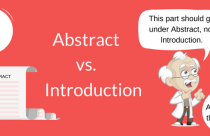Importance of the Results Section in Academic Papers

The function of the Results section is to objectively present your key results, without interpretation, and in an orderly and logical sequence using both illustrative materials (Tables and Figures) and text.
While the Methods section explains how the data were collected, the Results section presents what data were accumulated. Summaries of statistical analyses may appear either in the text or in the relevant Tables or Figures.
The Results section should be organized around a series of Tables and/or Figures sequenced to present your key findings in a logical order. The text of the Results section follows this sequence and provides answers to the questions/hypotheses you investigated. Important negative results should be reported as well. Authors usually write the text of the results section based upon this sequence of Tables and Figures.
A common error is for authors to confuse the information in the Results and Discussion sections. Overall, there are two basic ways of organizing the results:
- Presenting all the results in one section, followed by the discussion (perhaps in a different section)
- Presenting the results and discussion in parts
The method of organization you use will depend on the quantity and type of results you obtain from your research. You should look for a method of presentation that makes the information and ideas you are presenting as clear as possible to the reader. The style is usually dictated by the target journal.
When the journal expects results and discussion to be two separate sections, note the difference in their functions:
- Results = Data Presentation (Experiments showed that…)
- Discussion = Data Interpretation (Experiments suggest that…)
Language Style
The Results section is written in a concise and objective fashion. Irrespective of the field of study, some commonalities are as follows:
- Use passive voice, though active voice can be used when required
- Use the past tense
- Avoid repetitive paragraph structures
- Do not interpret data here
Related: Do you have questions on manuscript drafting? Get personalized answers on the FREE Q&A Forum!
The transition into interpretive language can be a slippery slope. Consider the following two examples:
Example without interpretation: The duration of exposure to running water had a pronounced effect on cumulative seed germination percentages (Fig. 2). Seeds exposed to the 2-day treatment had the highest cumulative germination (84%), 1.25 times that of the 12-h or 5-day groups and four times that of controls.
The above example highlights the trend/difference that the author wants the reader to focus on. Now consider the following example:
Example with interpretation: The results of the germination experiment (Fig. 2) suggest that the optimal time for running-water treatment is 2 days. This group showed the highest cumulative germination (84%), with longer (5 d) or shorter (12 h) exposures producing smaller gains in germination when compared to the control group.
In contrast, this example strays subtly into interpretation by referring to optimality (a
conceptual model) and tying the observed result to that idea.
Writing Strategy
Organize the Results section based on the sequence of Table and Figures you include. Prepare the Tables and Figures as soon as all the data are analyzed and arrange them in the sequence that best presents your findings in a logical way. A good strategy is to note, on a draft of each Table or Figure, the one or two key results you want to address in the text portion of the Results.
Simple rules to follow related to Tables and Figures:
Guideline #1: Tables and Figures are assigned numbers separately and in the sequence that you will refer to them from the text. Each Table or Figure must include a brief description of the results being presented and other necessary information in a legend.
- Table legends go above the Table; tables are read from top to bottom.
- Figure legends go below the figure; figures are usually viewed from bottom to top.
Tip 1!
When referring to a figure from the text, “Figure” is usually abbreviated as Fig., e.g., Fig. 1. Table is never abbreviated, e.g., Table 1.
Also, note that Figure is not abbreviated when used at the beginning of a sentence.
The body of the Results section is a text-based presentation of the key findings which includes references to each of the Tables and Figures. The text should guide the reader through your results stressing the key results which provide the answers to the question(s) investigated. Key results depend on your questions; they might include obvious trends, important differences, similarities, correlations, maximums, minimums, etc.
Caution!
- Do not reiterate each value from a Figure or Table—only the key result or trends that each conveys.
- Do not present the same data in both a Table and Figure—this is considered redundant and a waste of space and energy. Decide which format best shows the result and go with it.
- Do not report raw data values when they can be summarized as means, percents, etc.
Guideline #2: Statistical test summaries (test name, p-value) are usually reported parenthetically in conjunction with the biological results they support. Always report your results with parenthetical reference to the statistical conclusion that supports your finding. This parenthetical reference should include the statistical test used and the level of significance (test statistic and DF are optional). For example, if you found that the mean height of male Biology majors was significantly larger than that of female Biology majors, you might report this result and your statistical conclusion as follows:
Example: Males (180.5 ± 5.1 cm; n = 34) averaged 12.5 cm taller than females (168 ± 7.6 cm; n = 34) in the AY 1995 pool of Biology majors (two-sample t-test, t = 5.78, 33 d.f., p < 0.001).
If the summary statistics are shown in a figure, the sentence above need not report them specifically but must include a reference to the figure where they may be seen:
Example: Males averaged 12.5 cm taller than females in the AY 1995 pool of Biology majors (two-sample t-test, t = 5.78, 33 d.f., p < 0.001; Fig. 1).
Tip 2!
Notes about the use of the word significant(ly)
In scientific studies, the use of this word implies that a statistical test was employed to make a decision about the data; in this case, the test indicated a larger difference in mean heights than you would expect to get by chance alone. Limit the use of the word “significant” to this purpose only.
If your parenthetical statistical information includes a p-value that is significant, it is unnecessary (and redundant) to use the word “significant” in the body of the sentence.
Guideline #3: Report negative results—they are important! If you did not get the anticipated results, it may mean your hypothesis was incorrect and needs to be reformulated, or perhaps you have stumbled onto something unexpected that warrants further study. In either case, your results may be of importance to others even though they did not support your hypothesis. Do not fall into the trap of thinking that results contrary to what you expected are necessarily “bad data.” If you carried out the work well, they are simply your results and need interpretation. Many important discoveries can be traced to “bad data.”









